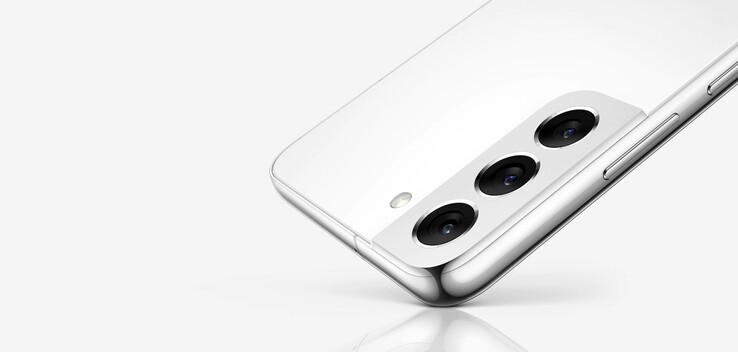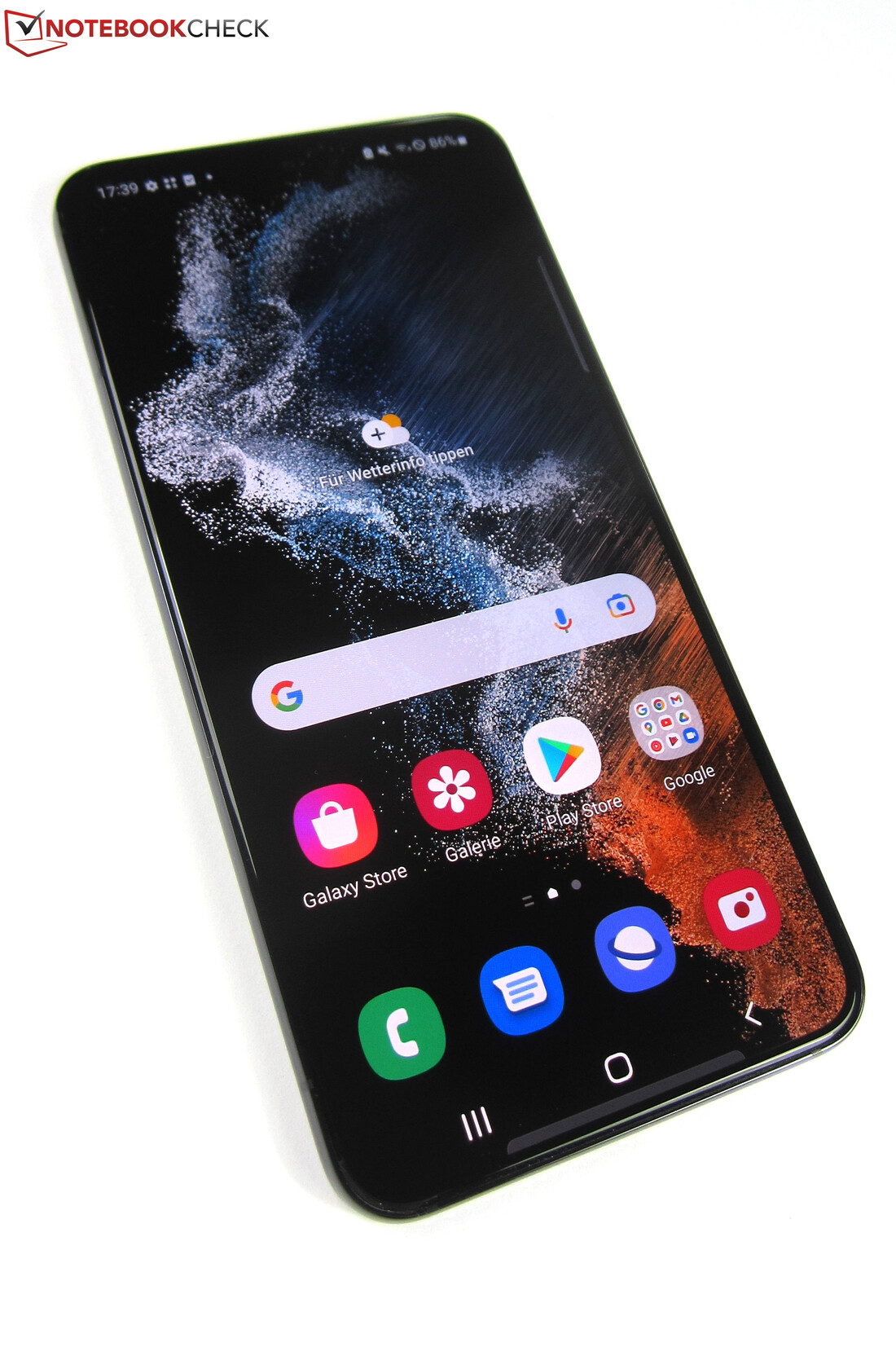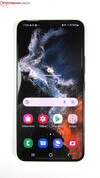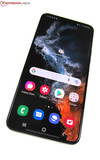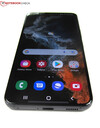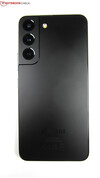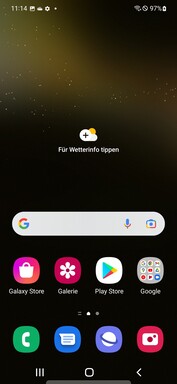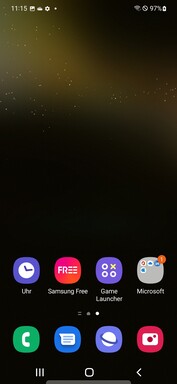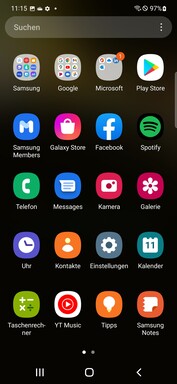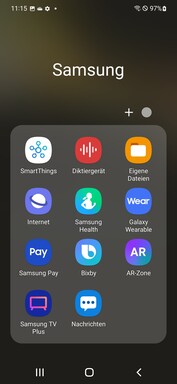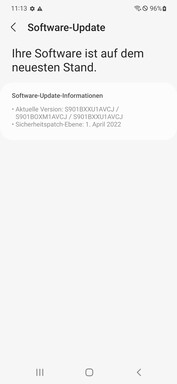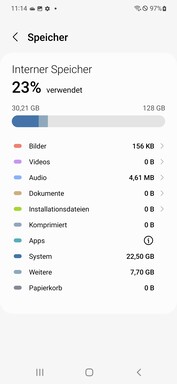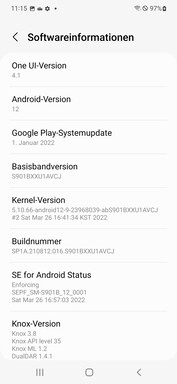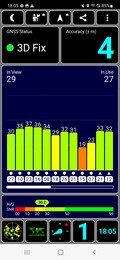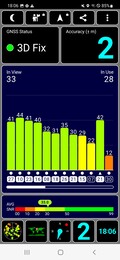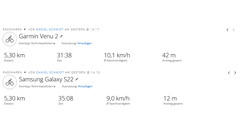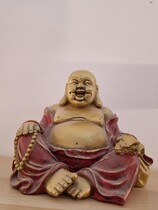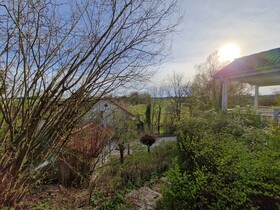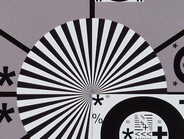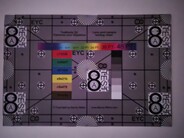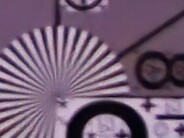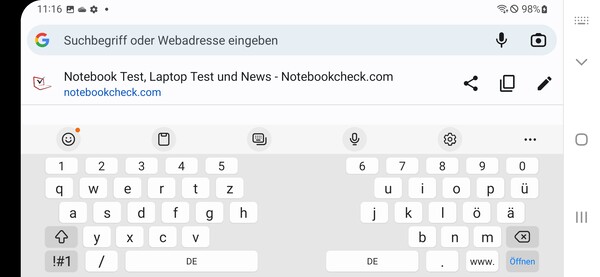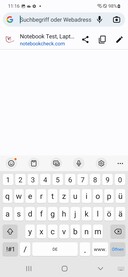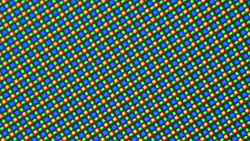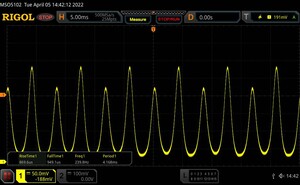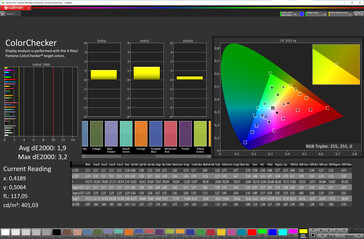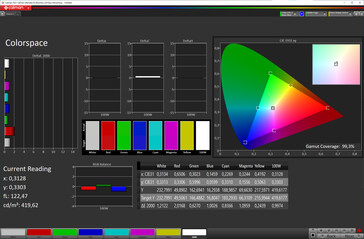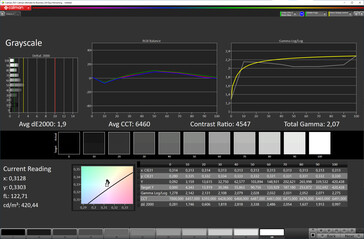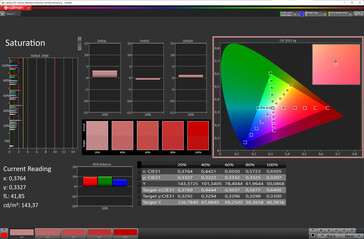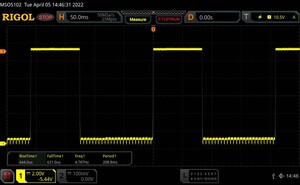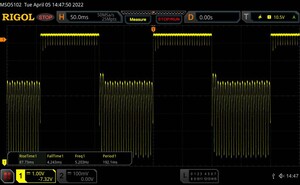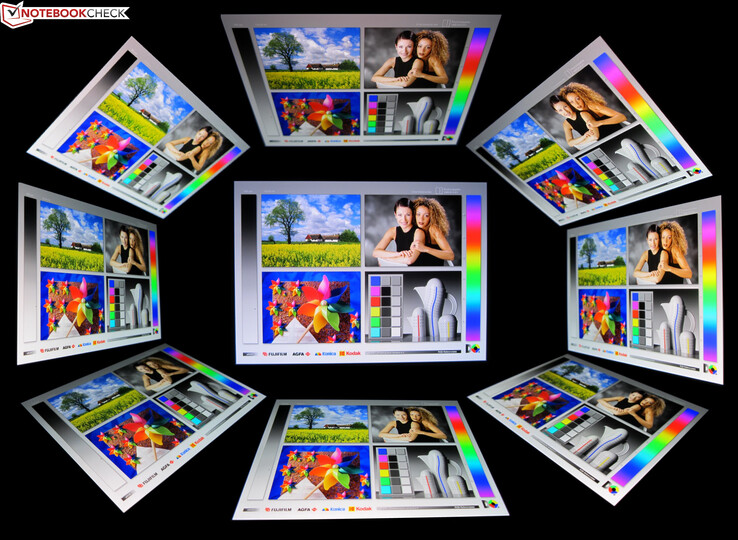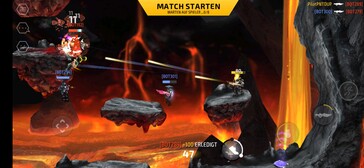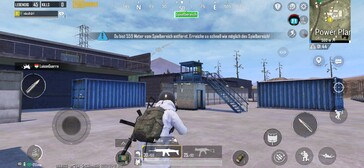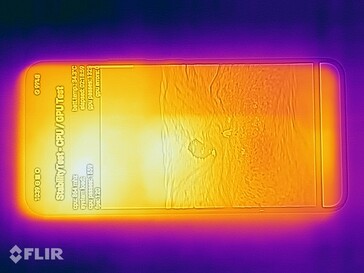Samsung Galaxy S22 Review: One of the best compact Android smartphones ↺
Samsung kicked off the year with the Galaxy S22 Ultra and is now making another addition to its Galaxy S lineup, which includes the flagship smartphones Galaxy S22 and Galaxy 22+. Our candidate, the Galaxy S22, is the smallest and cheapest model of the three but shares many features with its more expensive Galaxy S22 cousins.
With the Galaxy S22, Samsung has further refined the success recipe of the renowned Galaxy S21. Instead of major hardware changes, important core features have been improved, including the processor, camera module, and the case. In addition, there are eight color variants and the promise of OS updates all the way up to Android 16.
Possible Competitors in Comparison
Rating | Date | Model | Weight | Drive | Size | Resolution | Price |
|---|---|---|---|---|---|---|---|
| 89.3 % v7 (old) | 05 / 2022 | Samsung Galaxy S22 Exynos 2200, Xclipse 920 | 167 g | 128 GB UFS 3.1 Flash | 6.10" | 2340x1080 | |
| 88.7 % v7 (old) | 10 / 2021 | Apple iPhone 13 A15, A15 GPU 4-Core | 173 g | 128 GB NVMe | 6.10" | 2532x1170 | |
| 87.4 % v7 (old) | 11 / 2021 | Google Pixel 6 Tensor, Mali-G78 MP20 | 207 g | 128 GB UFS 3.1 Flash | 6.40" | 2400x1080 | |
| 89.5 % v7 (old) | 02 / 2021 | Samsung Galaxy S21 Exynos 2100 5G, Mali-G78 MP14 | 169 g | 128 GB UFS 3.1 Flash | 6.20" | 2400x1080 | |
| 87.1 % v7 (old) | 10 / 2021 | Sony Xperia 5 III SD 888 5G, Adreno 660 | 168 g | 128 GB UFS 3.0 Flash | 6.10" | 2520x1080 | |
| 87.7 % v7 (old) | 03 / 2022 | Xiaomi 12 SD 8 Gen 1, Adreno 730 | 179 g | 256 GB UFS 3.1 Flash | 6.28" | 2400x1080 |
Case: Glass chassis and aluminum frame
At 6.1 inches, the Samsung Galaxy S22 is a compact smartphone by today's standards and is even smaller than its 6.2-inch Galaxy S21 predecessor. It has the same form factor as the Apple iPhone 13, but this is not the only thing it has in common with its Apple rival. Both smartphones are also quite similar in terms of design: rounded corners, clear edges, and a uniformly flat frontside. Like the iPhone 13, there is also IP68 certification for protection against water and dust. Side by side, the dimensions of both smartphones are almost the same. However, the 6 g weight advantage over the Apple smartphone is exactly not noticeable with the Galaxy S22.
The Samsung Galaxy S22 has Gorilla Glass Victus+ protection on both the front and the back, which is further reinforced by an Armor Aluminum frame. Overall, the Samsung smartphone seems as if it was made from a single block and exudes a high-quality feeling all around.
The most striking design element on the back is the trio of lenses. The metal frame that connects the display and the back cover also encloses the camera unit, which protrudes a few millimeters away from the case. The matte surface finish of our test device in "Phantom Black" matches well with the discreet overall appearance of the Galaxy S22 and also makes it quite fingerprint-resistant. Case colors come in the form of "Phantom White", "Green", and "Pink Gold". Other color variants include "Graphite", "Cream", "Violet", and "Sky Blue", but these are only available in the Samsung shop.
Features: Android 12, up to 256 memory, and a fast USB-C port
Samsung offers the Galaxy S22 in two memory configurations. The 8/128 GB variant officially costs US$699,99, while the 256 GB version is slightly more expensive at US$ 849.99. Android 12, as well as One UI 4.1 and the preinstalled apps, take up 30.2 GB in our 128 GB test device, leaving 98 GB free. Internal memory cannot be expanded due to the lack of a microSD slot.
The Galaxy S22 lacks a 3.5 mm jack connection and an FM radio as well as a UWB chip, which the Galaxy S22+ and Galaxy S22 Ultra have. On the other hand, its USB-C port runs at USB 3.2 Gen.1 speed, meaning it transfers data at a nominal rate of 5 GBit/s. In practice, data rates of around 300 MB/s are possible. Two nano SIM cards can be installed into the Galaxy S22, while the second SIM slot can be replaced with an eSIM.
Software: Android 12 and One UI 4.1 for the Galaxy S22
The Samsung Galaxy S22 runs Android 12 and the manufacturer's own One UI 4.1 interface. At the time of testing (mid-April), the Android security patches were from April 1, 2022 — it can't get any more up to date than this.
Buyers can also expect operating system updates in the long term. Samsung promises that the Galaxy S22 will receive up to four Android OS upgrades and five years of security patches, so users will probably be able to enjoy using the smartphone up to and including Android 16. Under the S21 series, users received updates for a year less (with the exception of the Enterprise edition).
Communication & GNSS: Wi-Fi 6 and accurate GPS
In addition to 22 LTE bands, the Samsung Galaxy S22 also supports 17 5G bands, so there should be no issue with cell phone reception at almost any location.
In terms of WLAN, the Galaxy S22 communicates via Wi-Fi 6, meaning it lags somewhat behind the Galaxy S22+ that offers Wi-Fi 6E. In the practical Wi-Fi test with our Asus ROG Rapture GT-AXE11000 reference router, the Galaxy S22 still achieved brisk and stable transmission rates in the 5 GHz network, which were around 800 Mbps in both the send and receive directions.
| Networking | |
| iperf3 receive AXE11000 | |
| Xiaomi 12 | |
| Samsung Galaxy S22 | |
| Average of class Smartphone (52 - 1857, n=182, last 2 years) | |
| iperf3 transmit AXE11000 | |
| Samsung Galaxy S22 | |
| Xiaomi 12 | |
| Average of class Smartphone (49.8 - 1806, n=182, last 2 years) | |
| iperf3 transmit AX12 | |
| Apple iPhone 13 | |
| Google Pixel 6 | |
| Samsung Galaxy S21 | |
| Samsung Galaxy S21 | |
| Sony Xperia 5 III | |
| iperf3 receive AX12 | |
| Google Pixel 6 | |
| Sony Xperia 5 III | |
| Samsung Galaxy S21 | |
| Samsung Galaxy S21 | |
| Apple iPhone 13 | |
The Galaxy S22 uses data derived from GPS, Glonass, Beidou, Galileo, and QZSS with one band each to determine its location. Accuracy was up to 4 m indoors and up to 2 m outdoors
The phone passed the outdoor practice test with flying colors: On a 10 km bike ride, the Galaxy S22 displayed the actual position nearly as precisely as the Garmin Venu 2 (navigation device used for comparison). Smaller deviations were observed only in densely built-up areas, but this is unlikely to make a difference in everyday life.
Phone Functions & Voice Quality
The Samsung Galaxy S22 delivers very good voice quality. During phone calls, the voices of our conversation partners sounded natural and were easy to understand even with loud background noise. Upon activation of the loudspeaker, sound quality remained good although there were some slight voice reverberations from time to time. Intelligibility, nevertheless, remained high.
In addition to VoLTE, the Galaxy S22 also supports WLAN calls. The first option can be found in the connection settings while Wi-Fi calling can be activated in the phone app.
Cameras: Good photos, optional HDR10+ videos
The Galaxy S22 and Galaxy S22+ share the same triple camera setup, which consists of a 50 MP wide-angle camera with an optical image stabilizer (OIS), a 12 MP ultra-wide-angle camera, and a 10 MP telephoto camera with OIS and 3x optical zoom. The 10 MP front camera is integrated into the display via a small round opening and takes well-balanced selfies.
The main camera combines 4 adjacent pixels into one using pixel binning and thus takes 12 MP photos. In good lighting conditions, photos are impressively detailed and give very good contrasts. As is typical for Samsung, there is also a strong color scheme that is certainly not for everyone. Depending on the subject, the smartphone can dig a little too deep into the color pot and make the photos look too saturated. Thanks to updated camera software, the Galaxy S22 succeeds in taking much better and brighter night photos than the Galaxy S21 even if the level of detail is not particularly high.
The ultra-wide-angle camera takes decent photos, but the quality does not come close to that of the main camera. Photos are quite blurry at the edges of the image and are also accompanied by image noise. The telephoto camera brings subjects closer with 3x optical zoom, which results in good pictures in combination with optical image stabilization. The digital zoom offers up to 30x magnification.
The Galaxy S22 can record videos at up to 8K at 24 frames per second. Those who want to use the full array of cameras, however, have to settle for 4K and 30 FPS because only these modes allow for switching between lenses during recording. Nonetheless, they compensate with good image quality. The camera can also record videos in HDR10+, but this only works up to a maximum of Full HD and 30 FPS.
Image comparison
Choose a scene and navigate within the first image. One click changes the position on touchscreens. One click on the zoomed-in image opens the original in a new window. The first image shows the scaled photograph of the test device.
Tageslicht-Aufnahme 1Tageslicht-Aufnahme 2Ultraweitwinkel5-facher ZoomLowlight-AufnahmeIn the photo lab, we took another closer look at the camera. Under optimal lighting conditions, the Galaxy S22 reproduces colors and grayscales fairly accurately overall, but some green and blue tones were somewhat lacking. On the other hand, it was able to reproduce the test chart very well even with little residual light, but neglected image sharpness.
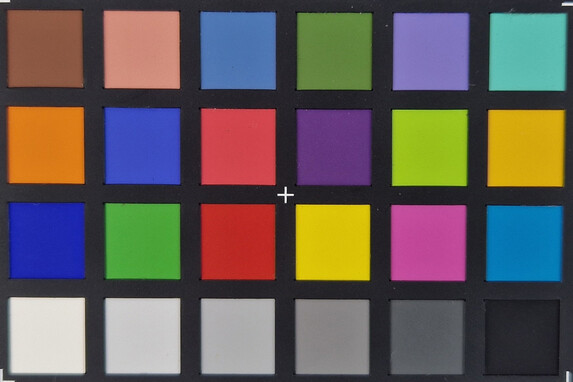
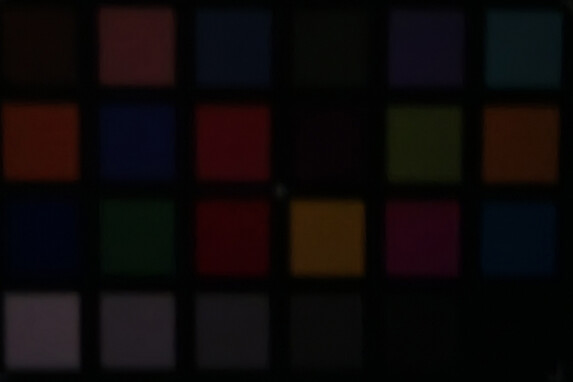
Accessories & Warranty: No power supply unit included
Samsung is quite sparing in terms of accessories. The packaging contains nothing more than a USB cable (Type C to A), a SIM tool, a quick guide, and leaflets with warranty information. If you don't have a power adapter to spare, you can stock up on the optional 25 W fast charging adapter. In its online shop, Samsung also offers wireless charging pads, protective cases and headphones, among other things.
The Samsung Galaxy S22 comes with a 24-month warranty, which can be extended via the Samsung Care+ insurance package.
Input Devices & Operation: Ultrasonic fingerprint sensor in display
The precise touchscreen of the Galaxy S22 ensures very smooth handling and never gave the impression of being overwhelmed by any task in the test. Finger inputs on Samsung's smallest Galaxy S22 model are handled without any delay, apps start quickly and switching between open applications takes place without jerks. Pen input is not supported — this is only available on the Galaxy S22 Ultra in the current Galaxy S line-up.
You can unlock the Galaxy S22 via the ultrasonic fingerprint sensor, which is located under the display. The fingerprint sensor reacts very quickly and has a high recognition rate. The second biometric authentication method is the less secure 2D face scan via the front camera.
Display: Up to 1,300 cd/m² bright AMOLED panel
The 2,340 x 1,080 pixel AMOLED display of the Galaxy S22 works with an adaptive refresh rate of 10 to 120 Hz but can also be set at 60 Hz. According to Samsung, the display reaches a peak brightness of 1,300 nits, which was confirmed in the test, making it one of the brightest smartphone displays. The Galaxy S22 also has an Always On Display for showing the time and notifications. An eye comfort mode that reduces the blue color component can also be activated.
With evenly distributed bright and dark image areas, the display achieves a luminance of 1,296 cd/m² (APL18) or 1,221 cd/m² under the additional brightness option (APL50). When the brightness sensor is deactivated, the luminance drops to a maximum of 745 cd/m² under standard settings, and to 430 cd/m² with the extra dimming option. Under the lowest brightness setting, the luminance can fall as low as 0.35 cd/m².
The PWM flickering that is typical of OLED panels when adjusting the brightness also occurs on the Galaxy S22. However, depending on the brightness level, this operates at a constant 120 or 240 Hz and should thus cause few or, ideally, no complaints (even for sensitive users).
| |||||||||||||||||||||||||
Brightness Distribution: 96 %
Center on Battery: 853 cd/m²
Contrast: ∞:1 (Black: 0 cd/m²)
ΔE ColorChecker Calman: 1.9 | ∀{0.5-29.43 Ø4.83}
ΔE Greyscale Calman: 1.9 | ∀{0.09-98 Ø5.1}
99.3% sRGB (Calman 2D)
Gamma: 2.07
CCT: 6460 K
| Samsung Galaxy S22 AMOLED, 2340x1080, 6.1" | Apple iPhone 13 OLED, 2532x1170, 6.1" | Google Pixel 6 OLED, 2400x1080, 6.4" | Samsung Galaxy S21 Dynamic AMOLED 2X, 2400x1080, 6.2" | Sony Xperia 5 III OLED, 2520x1080, 6.1" | Xiaomi 12 OLED, 2400x1080, 6.3" | |
|---|---|---|---|---|---|---|
| Screen | 24% | 1% | -8% | -44% | -3% | |
| Brightness middle | 853 | 831 -3% | 805 -6% | 790 -7% | 554 -35% | 867 2% |
| Brightness | 858 | 830 -3% | 805 -6% | 793 -8% | 559 -35% | 867 1% |
| Brightness Distribution | 96 | 98 2% | 98 2% | 97 1% | 95 -1% | 98 2% |
| Black Level * | ||||||
| Colorchecker dE 2000 * | 1.9 | 0.77 59% | 1.4 26% | 2.2 -16% | 2.22 -17% | 1.7 11% |
| Colorchecker dE 2000 max. * | 3.2 | 1.52 52% | 3.7 -16% | 4.2 -31% | 5.94 -86% | 4.4 -38% |
| Greyscale dE 2000 * | 1.9 | 1.2 37% | 1.8 5% | 1.6 16% | 3.6 -89% | 1.8 5% |
| Gamma | 2.07 106% | 2.209 100% | 2.29 96% | 2.13 103% | 2.193 100% | 2.2 100% |
| CCT | 6460 101% | 6501 100% | 6507 100% | 6497 100% | 7000 93% | 6762 96% |
* ... smaller is better
Screen Flickering / PWM (Pulse-Width Modulation)
| Screen flickering / PWM detected | 239.8 Hz | ||
The display backlight flickers at 239.8 Hz (worst case, e.g., utilizing PWM) . The frequency of 239.8 Hz is relatively low, so sensitive users will likely notice flickering and experience eyestrain at the stated brightness setting and below. In comparison: 53 % of all tested devices do not use PWM to dim the display. If PWM was detected, an average of 8327 (minimum: 5 - maximum: 343500) Hz was measured. | |||
Measurement at fixed zoom and different brightness settings
You can choose between "Vivid" and "Natural" for the screen mode, wherein the white balance can also be adjusted in the former. However, we get the best image quality in "Natural" image mode, which almost completely covers the sRGB color space. Color representation and RGB color balance then fall within the ideal range.
Display Response Times
| ↔ Response Time Black to White | ||
|---|---|---|
| 1.275 ms ... rise ↗ and fall ↘ combined | ↗ 0.644 ms rise | |
| ↘ 0.631 ms fall | ||
| The screen shows very fast response rates in our tests and should be very well suited for fast-paced gaming. In comparison, all tested devices range from 0.1 (minimum) to 240 (maximum) ms. » 5 % of all devices are better. This means that the measured response time is better than the average of all tested devices (20.5 ms). | ||
| ↔ Response Time 50% Grey to 80% Grey | ||
| 8.486 ms ... rise ↗ and fall ↘ combined | ↗ 4.243 ms rise | |
| ↘ 4.243 ms fall | ||
| The screen shows fast response rates in our tests and should be suited for gaming. In comparison, all tested devices range from 0.165 (minimum) to 636 (maximum) ms. » 20 % of all devices are better. This means that the measured response time is better than the average of all tested devices (32.1 ms). | ||
Performance: Exynos 2200 with a respectable distance to the competition
The Samsung Galaxy S22 uses the same high-end SoC, the Exynos 2200, as the Galaxy S22 Ultra. The octa-core processor is one of the fastest smartphone CPUs currently available, but it does not come close to competitors such as the Snapdragon 8 Gen 1 or the Apple A15 Bionic in terms of computing power. This is evident in the synthetic benchmarks, particularly in AnTuTu v9 and even more so in AImark. But compared to the Galaxy S21 and its Exynos 2100, the lead is only slight.
| PCMark for Android - Work 3.0 | |
| Sony Xperia 5 III | |
| Xiaomi 12 | |
| Average of class Smartphone (4507 - 27169, n=191, last 2 years) | |
| Samsung Galaxy S22 | |
| Average Samsung Exynos 2200 (12579 - 14998, n=4) | |
| Google Pixel 6 | |
| CrossMark - Overall | |
| Xiaomi 12 | |
| Average of class Smartphone (187 - 2674, n=145, last 2 years) | |
| Average Samsung Exynos 2200 (888 - 1129, n=4) | |
| Samsung Galaxy S22 | |
| Google Pixel 6 | |
| AImark - Score v2.x | |
| Sony Xperia 5 III | |
| Samsung Galaxy S21 | |
| Apple iPhone 13 | |
| Xiaomi 12 | |
| Samsung Galaxy S22 | |
| Average Samsung Exynos 2200 (6217 - 6487, n=3) | |
| Google Pixel 6 | |
In terms of graphics performance, the Xclipse 920 GPU integrated in the Samsung Exynos 2200 shows a similar story as the CPU benchmarks. The Exynos 2200 is no match for the Snapdragon 8 Gen 1 and the Apple A15 Bionic. It outdoes the Tensor SoC of the Google Pixel 6 and the Sony Xperia 5 III with a Snapdragon 888 in the GPU benchmarks but does not manage to gain anything more than a relatively small lead.
GFXBench (DX / GLBenchmark) 2.7: T-Rex Onscreen | 1920x1080 T-Rex Offscreen
GFXBench 3.0: on screen Manhattan Onscreen OGL | 1920x1080 1080p Manhattan Offscreen
GFXBench 3.1: on screen Manhattan ES 3.1 Onscreen | 1920x1080 Manhattan ES 3.1 Offscreen
GFXBench: on screen Car Chase Onscreen | 1920x1080 Car Chase Offscreen | on screen Aztec Ruins High Tier Onscreen | 2560x1440 Aztec Ruins High Tier Offscreen | on screen Aztec Ruins Normal Tier Onscreen | 1920x1080 Aztec Ruins Normal Tier Offscreen
| 3DMark / Wild Life Extreme Unlimited | |
| Xiaomi 12 | |
| Apple iPhone 13 | |
| Samsung Galaxy S22 | |
| Google Pixel 6 | |
| Sony Xperia 5 III | |
| 3DMark / Wild Life Extreme | |
| Xiaomi 12 | |
| Apple iPhone 13 | |
| Google Pixel 6 | |
| Samsung Galaxy S22 | |
| Sony Xperia 5 III | |
| 3DMark / Wild Life Unlimited Score | |
| Apple iPhone 13 | |
| Xiaomi 12 | |
| Samsung Galaxy S22 | |
| Google Pixel 6 | |
| Samsung Galaxy S21 | |
| Sony Xperia 5 III | |
| 3DMark / Wild Life Score | |
| Xiaomi 12 | |
| Apple iPhone 13 | |
| Samsung Galaxy S22 | |
| Google Pixel 6 | |
| Samsung Galaxy S21 | |
| Sony Xperia 5 III | |
| 3DMark / Sling Shot Extreme (ES 3.1) Unlimited Physics | |
| Samsung Galaxy S21 | |
| Xiaomi 12 | |
| Samsung Galaxy S22 | |
| Google Pixel 6 | |
| Apple iPhone 13 | |
| 3DMark / Sling Shot Extreme (ES 3.1) Unlimited Graphics | |
| Xiaomi 12 | |
| Samsung Galaxy S22 | |
| Apple iPhone 13 | |
| Google Pixel 6 | |
| Samsung Galaxy S21 | |
| 3DMark / Sling Shot Extreme (ES 3.1) Unlimited | |
| Xiaomi 12 | |
| Samsung Galaxy S22 | |
| Samsung Galaxy S21 | |
| Google Pixel 6 | |
| Apple iPhone 13 | |
| 3DMark / Sling Shot OpenGL ES 3.0 Unlimited | |
| Samsung Galaxy S22 | |
| Xiaomi 12 | |
| Samsung Galaxy S21 | |
| Google Pixel 6 | |
| 3DMark / Sling Shot OpenGL ES 3.0 Unlimited Graphics | |
| Xiaomi 12 | |
| Samsung Galaxy S22 | |
| Google Pixel 6 | |
| Samsung Galaxy S21 | |
| 3DMark / Sling Shot OpenGL ES 3.0 Unlimited Physics | |
| Samsung Galaxy S21 | |
| Samsung Galaxy S22 | |
| Xiaomi 12 | |
| Google Pixel 6 | |
| GFXBench (DX / GLBenchmark) 2.7 / T-Rex Onscreen | |
| Xiaomi 12 | |
| Samsung Galaxy S22 | |
| Sony Xperia 5 III | |
| Samsung Galaxy S21 | |
| Google Pixel 6 | |
| Apple iPhone 13 | |
| GFXBench (DX / GLBenchmark) 2.7 / T-Rex Offscreen | |
| Xiaomi 12 | |
| Apple iPhone 13 | |
| Samsung Galaxy S22 | |
| Sony Xperia 5 III | |
| Google Pixel 6 | |
| Samsung Galaxy S21 | |
| GFXBench 3.0 / Manhattan Onscreen OGL | |
| Xiaomi 12 | |
| Samsung Galaxy S21 | |
| Samsung Galaxy S22 | |
| Sony Xperia 5 III | |
| Google Pixel 6 | |
| Apple iPhone 13 | |
| GFXBench 3.0 / 1080p Manhattan Offscreen | |
| Apple iPhone 13 | |
| Xiaomi 12 | |
| Samsung Galaxy S22 | |
| Samsung Galaxy S21 | |
| Sony Xperia 5 III | |
| Google Pixel 6 | |
| GFXBench 3.1 / Manhattan ES 3.1 Onscreen | |
| Xiaomi 12 | |
| Samsung Galaxy S22 | |
| Samsung Galaxy S21 | |
| Apple iPhone 13 | |
| Sony Xperia 5 III | |
| Google Pixel 6 | |
| GFXBench 3.1 / Manhattan ES 3.1 Offscreen | |
| Xiaomi 12 | |
| Apple iPhone 13 | |
| Samsung Galaxy S22 | |
| Samsung Galaxy S21 | |
| Sony Xperia 5 III | |
| Google Pixel 6 | |
| GFXBench / Car Chase Onscreen | |
| Xiaomi 12 | |
| Samsung Galaxy S22 | |
| Apple iPhone 13 | |
| Samsung Galaxy S21 | |
| Sony Xperia 5 III | |
| Google Pixel 6 | |
| GFXBench / Car Chase Offscreen | |
| Apple iPhone 13 | |
| Xiaomi 12 | |
| Samsung Galaxy S22 | |
| Sony Xperia 5 III | |
| Samsung Galaxy S21 | |
| Google Pixel 6 | |
| GFXBench / Aztec Ruins High Tier Onscreen | |
| Xiaomi 12 | |
| Apple iPhone 13 | |
| Samsung Galaxy S22 | |
| Samsung Galaxy S21 | |
| Google Pixel 6 | |
| Sony Xperia 5 III | |
| GFXBench / Aztec Ruins High Tier Offscreen | |
| Xiaomi 12 | |
| Apple iPhone 13 | |
| Samsung Galaxy S22 | |
| Samsung Galaxy S21 | |
| Sony Xperia 5 III | |
| Google Pixel 6 | |
| GFXBench / Aztec Ruins Normal Tier Onscreen | |
| Xiaomi 12 | |
| Samsung Galaxy S22 | |
| Google Pixel 6 | |
| Samsung Galaxy S21 | |
| Sony Xperia 5 III | |
| GFXBench / Aztec Ruins Normal Tier Offscreen | |
| Apple iPhone 13 | |
| Xiaomi 12 | |
| Samsung Galaxy S22 | |
| Sony Xperia 5 III | |
| Samsung Galaxy S21 | |
| Google Pixel 6 | |
In terms of browser performance, the Galaxy S22 performs very well, but it falls behind the Apple iPhone 13 like all other Android comparison devices.
| Jetstream 2 - 2.0 Total Score | |
| Apple iPhone 13 (Safari 15) | |
| Average of class Smartphone (13.8 - 387, n=154, last 2 years) | |
| Sony Xperia 5 III (Chrome93) | |
| Xiaomi 12 (Chrome 99.0.4844.58) | |
| Samsung Galaxy S22 (Chrome 100.0.4896.79) | |
| Google Pixel 6 (Chrome 96) | |
| Average Samsung Exynos 2200 (13.8 - 107.4, n=4) | |
| Samsung Galaxy S21 (Chrome 88.0.4324.152) | |
| JetStream 1.1 - Total Score | |
| Apple iPhone 13 (Safari 15) | |
| Xiaomi 12 (Chrome 99.0.4844.58) | |
| Sony Xperia 5 III (Chrome93) | |
| Google Pixel 6 (Chrome 96) | |
| Average Samsung Exynos 2200 (118.9 - 200, n=3) | |
| Samsung Galaxy S22 (Chrome 100.0.4896.79) | |
| Samsung Galaxy S21 (Chrome 88.0.4324.152) | |
| Speedometer 2.0 - Result | |
| Apple iPhone 13 (Safari 15) | |
| Average of class Smartphone (15.2 - 585, n=137, last 2 years) | |
| Average Samsung Exynos 2200 (105 - 137, n=4) | |
| Samsung Galaxy S22 (Chrome 100.0.4896.79) | |
| Xiaomi 12 (Chrome 99.0.4844.58) | |
| Google Pixel 6 (Chrome 96) | |
| Samsung Galaxy S21 (Chrome 88.0.4324.152) | |
| WebXPRT 3 - Overall | |
| Apple iPhone 13 (Safari 15) | |
| Average of class Smartphone (38 - 347, n=55, last 2 years) | |
| Samsung Galaxy S22 (Chrome 100.0.4896.79) | |
| Xiaomi 12 (Chrome 99.0.4844.58) | |
| Average Samsung Exynos 2200 (124 - 153, n=3) | |
| Samsung Galaxy S21 (Chrome 88.0.4324.152) | |
| Google Pixel 6 (Chrome 96) | |
| Octane V2 - Total Score | |
| Apple iPhone 13 (Safari 15) | |
| Sony Xperia 5 III (Chrome93) | |
| Average of class Smartphone (2228 - 100368, n=204, last 2 years) | |
| Google Pixel 6 (Chrome 96) | |
| Average Samsung Exynos 2200 (34055 - 51202, n=4) | |
| Samsung Galaxy S22 (Chrome 100.0.4896.79) | |
| Xiaomi 12 (Chrome 99.0.4844.58) | |
| Samsung Galaxy S21 (Chrome 88.0.4324.152) | |
| Mozilla Kraken 1.1 - Total | |
| Samsung Galaxy S21 (Chrome 88.0.4324.152) | |
| Samsung Galaxy S22 (Chrome 100.0.4896.79) | |
| Average Samsung Exynos 2200 (840 - 1566, n=4) | |
| Average of class Smartphone (277 - 28190, n=158, last 2 years) | |
| Google Pixel 6 (Chrome 96) | |
| Xiaomi 12 (Chrome 99.0.4844.58) | |
| Sony Xperia 5 III (Chrome93) | |
| Apple iPhone 13 (Safari 15) | |
* ... smaller is better
The transfer rates of UFS 3.1 are at a good level, but the smartphone falls in the midfield among comparison devices in terms of potential performance. In practice, however, these differences are not noticeable.
| Samsung Galaxy S22 | Google Pixel 6 | Samsung Galaxy S21 | Sony Xperia 5 III | Xiaomi 12 | Average 128 GB UFS 3.1 Flash | Average of class Smartphone | |
|---|---|---|---|---|---|---|---|
| AndroBench 3-5 | -38% | 11% | -5% | 39% | -10% | 40% | |
| Sequential Read 256KB | 1486 | 1546 4% | 1648 11% | 1593 7% | 1851 25% | 1581 ? 6% | 2158 ? 45% |
| Sequential Write 256KB | 993 | 233.4 -76% | 1095 10% | 740 -25% | 1417 43% | 742 ? -25% | 1749 ? 76% |
| Random Read 4KB | 273 | 126.2 -54% | 309.7 13% | 253.4 -7% | 325.2 19% | 242 ? -11% | 294 ? 8% |
| Random Write 4KB | 257.6 | 190.3 -26% | 282.6 10% | 271.3 5% | 437.5 70% | 238 ? -8% | 336 ? 30% |
Gaming: With FPS limits
The combination of the Exynos 2200 and the Xclipse 920 GPU provides a decent boost in games. Despite the 120 Hz display and plenty of power, more than 30 FPS was not possible in the test games Armajet and PUBG Mobile, regardless of which graphics settings we chose.
Frame rates were determined with our Gamebench test tool.
Emissions: Rapid throttling under load
Temperature
The Samsung Galaxy S22 feels lukewarm at best under load. Surface temperatures fall well below the 30 °C mark when idling.
The Exynos 2200 only reaches maximum performance when the operating temperature is low enough. However, this does not last long. As soon as the SoC faces demanding tasks, its performance throttles significantly after a short time, which is well illustrated by the graphs of the 3DMark Wild Life stress test. The Snapdragon 8 Gen 1 has even more temperature problems than the Exynos 2200, but the Apple A15 Bionic is comparatively stable under load.
(+) The maximum temperature on the upper side is 33.7 °C / 93 F, compared to the average of 35.1 °C / 95 F, ranging from 21.9 to 63.7 °C for the class Smartphone.
(+) The bottom heats up to a maximum of 35 °C / 95 F, compared to the average of 33.9 °C / 93 F
(+) In idle usage, the average temperature for the upper side is 27.4 °C / 81 F, compared to the device average of 32.9 °C / 91 F.
3DMark Wild Life Stress Test
| 3DMark | |
| Wild Life Stress Test Stability | |
| Apple iPhone 13 | |
| Sony Xperia 5 III | |
| Samsung Galaxy S21 | |
| Samsung Galaxy S22 | |
| Google Pixel 6 | |
| Xiaomi 12 | |
| Wild Life Extreme Stress Test | |
| Apple iPhone 13 | |
| Samsung Galaxy S22 | |
| Sony Xperia 5 III | |
| Google Pixel 6 | |
| Xiaomi 12 | |
Speakers
The speakers of the Galaxy S22, located on both ends of the smartphone, play quite loudly and deliver a fairly balanced sound overall even if bass tones are almost impossible to hear in the sound mix.
Those wanting sound via Bluetooth have to be content with the SBC, AAC, aptX, and LDAC codecs. Wired headphones can also be connected to the USB-C port of the Galaxy S22 with an adapter.
Samsung Galaxy S22 audio analysis
(+) | speakers can play relatively loud (89.5 dB)
Bass 100 - 315 Hz
(-) | nearly no bass - on average 26.3% lower than median
(±) | linearity of bass is average (10.2% delta to prev. frequency)
Mids 400 - 2000 Hz
(±) | higher mids - on average 6.2% higher than median
(+) | mids are linear (4.4% delta to prev. frequency)
Highs 2 - 16 kHz
(±) | higher highs - on average 5.6% higher than median
(+) | highs are linear (5.5% delta to prev. frequency)
Overall 100 - 16.000 Hz
(±) | linearity of overall sound is average (19% difference to median)
Compared to same class
» 22% of all tested devices in this class were better, 9% similar, 69% worse
» The best had a delta of 12%, average was 36%, worst was 134%
Compared to all devices tested
» 43% of all tested devices were better, 8% similar, 49% worse
» The best had a delta of 4%, average was 24%, worst was 134%
Xiaomi 12 audio analysis
(+) | speakers can play relatively loud (90.7 dB)
Bass 100 - 315 Hz
(-) | nearly no bass - on average 19.3% lower than median
(±) | linearity of bass is average (8.2% delta to prev. frequency)
Mids 400 - 2000 Hz
(±) | higher mids - on average 5% higher than median
(+) | mids are linear (4.7% delta to prev. frequency)
Highs 2 - 16 kHz
(±) | higher highs - on average 7.5% higher than median
(+) | highs are linear (4.7% delta to prev. frequency)
Overall 100 - 16.000 Hz
(±) | linearity of overall sound is average (17.3% difference to median)
Compared to same class
» 10% of all tested devices in this class were better, 8% similar, 83% worse
» The best had a delta of 12%, average was 36%, worst was 134%
Compared to all devices tested
» 31% of all tested devices were better, 8% similar, 61% worse
» The best had a delta of 4%, average was 24%, worst was 134%
Battery life: Solid average despite reduced battery size
Power consumption
With an average power consumption of 1.2 W, the Galaxy S22 is quite economical in idle mode. Under load, however, power consumption increases significantly and is also on average higher than comparison devices.
The Galaxy S22's 3,700 mAh battery can be charged with up to a 25 W charger. However, as with other Galaxy S models, Samsung charges extra for the matching power supply unit. In turn, the other Galaxy S22 models offer larger batteries and more charging power. The Galaxy S22+ (4,500 mAh) and the Galaxy S22 Ultra (5,000 mAh) can be charged with a 45 W charger. Up to 15 W wireless charging is supported on the Galaxy S22. With the Wireless PowerShare function, the Galaxy S22 can also charge other compatible Galaxy devices wirelessly.
| Off / Standby | |
| Idle | |
| Load |
|
Key:
min: | |
| Samsung Galaxy S22 3700 mAh | Apple iPhone 13 3240 mAh | Google Pixel 6 4614 mAh | Samsung Galaxy S21 4000 mAh | Sony Xperia 5 III 4500 mAh | Xiaomi 12 4500 mAh | Average Samsung Exynos 2200 | Average of class Smartphone | |
|---|---|---|---|---|---|---|---|---|
| Power Consumption | 15% | 11% | -28% | -86% | -13% | -9% | -19% | |
| Idle Minimum * | 0.69 | 0.6 13% | 0.68 1% | 1.1 -59% | 1.8 -161% | 0.87 -26% | 0.668 ? 3% | 0.868 ? -26% |
| Idle Average * | 1.19 | 1 16% | 1 16% | 1.61 -35% | 2.6 -118% | 1.7 -43% | 1.038 ? 13% | 1.426 ? -20% |
| Idle Maximum * | 1.26 | 1.3 -3% | 1.02 19% | 1.78 -41% | 3.1 -146% | 1.82 -44% | 1.218 ? 3% | 1.588 ? -26% |
| Load Average * | 6.97 | 4.5 35% | 5.39 23% | 6.47 7% | 5.3 24% | 4.68 33% | 9.43 ? -35% | 7.17 ? -3% |
| Load Maximum * | 8.85 | 7.8 12% | 9 -2% | 10.12 -14% | 11.5 -30% | 7.41 16% | 11.5 ? -30% | 10.8 ? -22% |
* ... smaller is better
Power Consumption: Geekbench (150 cd/m²)
Power Consumption: GFXBench (150 cd/m²)
Battery life
The battery life of the Galaxy S22 is solidly average. During simulated web surfing, the smartphone lasts a little more than 11 hours and almost 15 hours during video playback. This is an improvement over its predecessor, the Galaxy S21, which is 13% worse overall despite sporting a larger battery.
| Samsung Galaxy S22 3700 mAh | Apple iPhone 13 3240 mAh | Google Pixel 6 4614 mAh | Samsung Galaxy S21 4000 mAh | Sony Xperia 5 III 4500 mAh | Xiaomi 12 4500 mAh | |
|---|---|---|---|---|---|---|
| Battery Runtime | 27% | 3% | -13% | 8% | 12% | |
| Reader / Idle | 2182 | 2734 25% | 2020 -7% | 1713 -21% | 2558 17% | |
| H.264 | 887 | 1224 38% | 1219 37% | 941 6% | 890 0% | |
| WiFi v1.3 | 675 | 1019 51% | 627 -7% | 544 -19% | 727 8% | 760 13% |
| Load | 324 | 299 -8% | 291 -10% | 267 -18% | 385 19% |
Pros
Cons
Verdict of the Samsung Galaxy S22
Samsung has created a very good package overall with the Galaxy S22, which, like the Galaxy S21, impresses with excellent workmanship, solid aesthetics, and strong performance.
There are some improvements over its predecessor. For example, the camera now takes significantly better night shots and there are now glass surfaces all over instead of a plastic back. The battery life has also improved (despite a smaller battery) as has the 120 Hz display, which achieves an image display just as good as that of the Galaxy S21, but dynamically adjusts its frame rate over a wider range and, above all, shines much more brightly.
The 6.1-inch Samsung Galaxy S22 impresses with its high-quality workmanship and powerful features.
Another strong selling point is Samsung's update policy for the Galaxy S22, which promises that the smartphone will be able to run successive operating systems up to Android 16. You can thus spare yourself from having to make a new smartphone upgrade for a long time.
The latest version of the cheapest Galaxy S model also does without a microSD slot, a jack socket, and a power supply unit. Charging power capacity also remains limited to 25 W, which no longer seems to be keeping up with the times.
Alternatives to the Galaxy S22 include the 6.1-inch Apple iPhone 13, which is also very similar to the Samsung in terms of size and design. The Sony Xperia 5 III and the Xiaomi 12, which are also compact, are currently much cheaper and also somewhat faster than the Galaxy S22.
Price and Availability
The Samsung Galaxy S22 can be purchased at various prices via Amazon US. The variant with 128 GB memory is available at US$699.99 and the other with 256 GB at US$849.99.
Samsung Galaxy S22
- 08/30/2022 v7 (old)
Manuel Masiero




